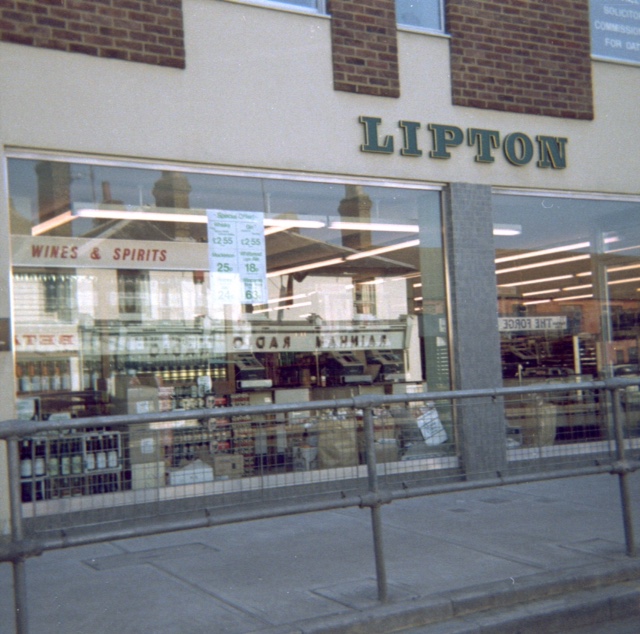The Rainham ‘Bug Hutch'
Originally constructed as a Salvation Army hall, the Royal cinema which could seat 395 people opened on 25th October 1920 as a new location of entertainment in Rainham. In the early years it showed black and white films with a basic projector and proved popular at a time when TV didn’t exist.
In 1947 the cinema experienced a serious fire but it survived then in 1956 it was updated with ‘CinemaScope,’ an amorphic lens for shooting wide screen movies. This allowed a better quality image with stereophonic sound to be projected. Sandwiched between Pullen’s seed shop on the right and an estate agent’s named Harris & Bone on the left, the cinema’s entry point could be found on the right side and the screen at the high street end of the building. Compared with other cinemas the Royal was basic without a balcony area or a cafeteria. From the entry point a narrow corridor led to a very small box office where a ticket could be purchased from a lady named Joyce then entry into the auditorium immediately to the left. Pushy teenagers made for the back rows where they could snog with their girlfriends, smoke or just chat with their friends. The building became commonly known as the ‘Bug hutch’ although it wasn’t exactly a flea pit as it had a reasonably clean and comfortable interior.

Above: Photo of Bug Hutch, Rainham - The Royal Cinema
Below: Photo of location of Royal Cinema in 2001 - the roof line with the 4 chimneys is still the same as the phot above from 1960s
On Saturday mornings during the 1950s and early 1960s local children packed the cinema to watch cartoon films and American serials like ‘Flash Gordon.’ As they cheered, banged the seats and threw balls of paper the programme continued unabated to the end, all in good fun, of course. I only attended a handful of times then got sick of the noise and began attending the Saturday morning sessions at the Odeon in Gillingham which proved to be less noisy in more spacious surroundings.
The Saturday afternoon matinee followed the children’s morning session, attended mainly by teenagers who turned up to watch a blockbuster film of the day. For a small admission fee they could watch a cartoon, a preview of future films, Pathe News and a full length film, sometimes two films.
Apart from the projectionist the Royal was almost entirely overseen by an ageing lady with tightly permed grey hair who worked as an usherette. I believe she lived in Orchard Street and constantly moaned at the youth, often shouted at them and occasionally threw them out if they misbehaved. Using a small torch she showed customers to their seats and occasionally served tickets in the box office. I remember attending as a boy and joining an irate crowd of youngsters queuing and pushing outside the cinema until almost the starting time of the film. The usherette turned up very late to a scene of chaos, she sorted everyone into an orderly line before opening the doors and then made everyone line up in a regimented fashion to buy tickets which she served. On another occasion the projector broke down in the early part of a film which at first caused disappointment then a complete riot. The usherette lost control in a crescendo of whistling, shouting and heckling then after a long delay the projectionist eventually announced that the problem couldn’t be fixed and everyone had to leave the cinema but at least they had the entry fee refunded.
Saturday afternoon attracted large audiences, particularly during the winter months when adverse weather prevented youngsters from doing very much. During the 1960s when I attended I saw films such as Pinnochio, Son of Paleface, Ice Cold in Alex, Guns at Batasi, Goldfinger and Zulu.
Eventually, audiences began to diminish and although new seating was installed in later years, the owner Mrs Gass, decided to sell up and retire. The cinema closed immediately after the screening of Cat Ballou starring Lee Marvin on March 5th 1966 after 43 years in existence. Other local cinemas like The Gaumont closed in 1961, the Odeon (Gillingham) in 1977 and the Plaza in 1980.
After closure the boarded up cinema stood empty for a while then builders turned it into Vye & Sons supermarket. These days the building is the location of Lukehurst’s furniture shop and the roof is the only recognisable part of the original cinema that remains.

This comment was received from David Stevens: ""Parker's" was the name of the shop near the bus stop to the right of the bug hutch cinema. Parker's shop sold sweets, tobacco products (I think), and other items I can't remember. The brown and white (Chatham Traction Company) double decker buses would come up Station Road from their terminus, and turn right and then stop at the bus stop near Parker's. Some of the green and white (Maidstone & District) double deckers would follow the same route, but others would come straight through from the Sittingbourne/Faversham region to the east (?).
Grays bicycle shop was to the left of the bughutch and a seed merchant to the right. Lemonade 6 pence a bottle with 2 pence on return. They also sold toys and more importantly ice cream delivered first after the war once a week and we used to go and queue early to avoid disappointment. Ice cream in blocks and everyone watched closely to make sure they did not short change you as they sliced it. Whittaker's on the right going down Station Road also sold fizzy drinks - their specialty was a 5-6 ounce, home-made, frozen ice lolly made from Coca-Cola or Tizer ("the Appetizer"). That seed shop next to the bug hutch was Pullen's I think..
Photo of the Liptons supermarket in the early 1970s.

Harris and Bone estate agents looking towards Liptons formerly Bug Hutch


